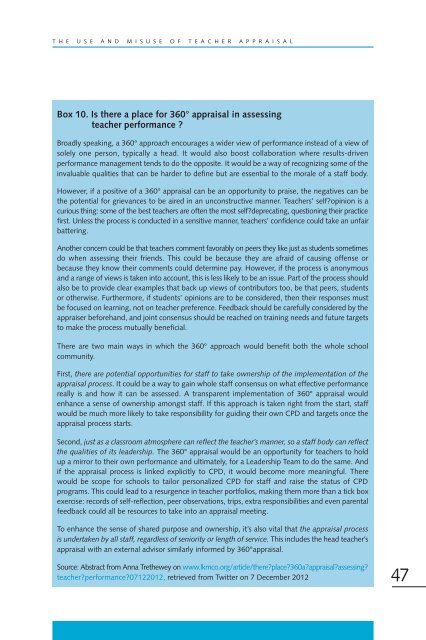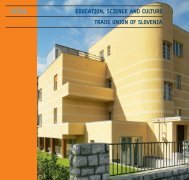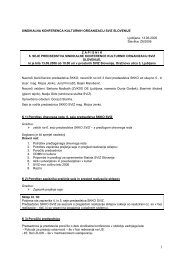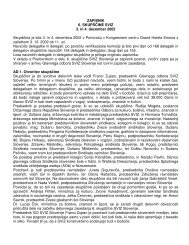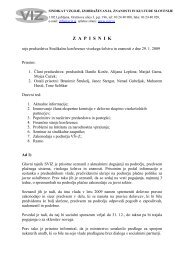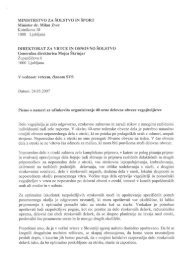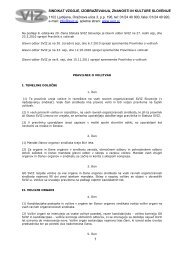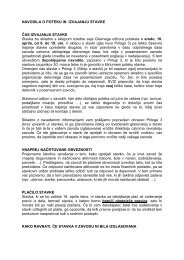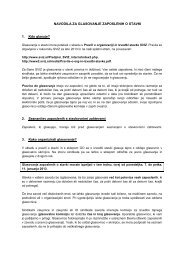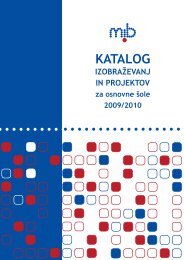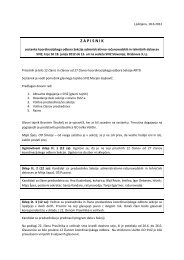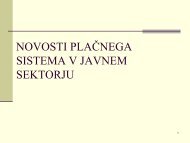The use and misuse of teacher appraisal - Education International
The use and misuse of teacher appraisal - Education International
The use and misuse of teacher appraisal - Education International
You also want an ePaper? Increase the reach of your titles
YUMPU automatically turns print PDFs into web optimized ePapers that Google loves.
T H E U S E A N D M I S U S E O F T E A C H E R A P P R A I S A L<br />
Box 10. Is there a place for 360° <strong>appraisal</strong> in assessing<br />
<strong>teacher</strong> performance ?<br />
Broadly speaking, a 360° approach encourages a wider view <strong>of</strong> performance instead <strong>of</strong> a view <strong>of</strong><br />
solely one person, typically a head. It would also boost collaboration where results-driven<br />
performance management tends to do the opposite. It would be a way <strong>of</strong> recognizing some <strong>of</strong> the<br />
invaluable qualities that can be harder to define but are essential to the morale <strong>of</strong> a staff body.<br />
However, if a positive <strong>of</strong> a 360° <strong>appraisal</strong> can be an opportunity to praise, the negatives can be<br />
the potential for grievances to be aired in an unconstructive manner. Teachers’ self?opinion is a<br />
curious thing: some <strong>of</strong> the best <strong>teacher</strong>s are <strong>of</strong>ten the most self?deprecating, questioning their practice<br />
first. Unless the process is conducted in a sensitive manner, <strong>teacher</strong>s’ confidence could take an unfair<br />
battering.<br />
Another concern could be that <strong>teacher</strong>s comment favorably on peers they like just as students sometimes<br />
do when assessing their friends. This could be beca<strong>use</strong> they are afraid <strong>of</strong> causing <strong>of</strong>fense or<br />
beca<strong>use</strong> they know their comments could determine pay. However, if the process is anonymous<br />
<strong>and</strong> a range <strong>of</strong> views is taken into account, this is less likely to be an issue. Part <strong>of</strong> the process should<br />
also be to provide clear examples that back up views <strong>of</strong> contributors too, be that peers, students<br />
or otherwise. Furthermore, if students’ opinions are to be considered, then their responses must<br />
be foc<strong>use</strong>d on learning, not on <strong>teacher</strong> preference. Feedback should be carefully considered by the<br />
appraiser beforeh<strong>and</strong>, <strong>and</strong> joint consensus should be reached on training needs <strong>and</strong> future targets<br />
to make the process mutually beneficial.<br />
<strong>The</strong>re are two main ways in which the 360° approach would benefit both the whole school<br />
community.<br />
First, there are potential opportunities for staff to take ownership <strong>of</strong> the implementation <strong>of</strong> the<br />
<strong>appraisal</strong> process. It could be a way to gain whole staff consensus on what effective performance<br />
really is <strong>and</strong> how it can be assessed. A transparent implementation <strong>of</strong> 360° <strong>appraisal</strong> would<br />
enhance a sense <strong>of</strong> ownership amongst staff. If this approach is taken right from the start, staff<br />
would be much more likely to take responsibility for guiding their own CPD <strong>and</strong> targets once the<br />
<strong>appraisal</strong> process starts.<br />
Second, just as a classroom atmosphere can reflect the <strong>teacher</strong>’s manner, so a staff body can reflect<br />
the qualities <strong>of</strong> its leadership. <strong>The</strong> 360° <strong>appraisal</strong> would be an opportunity for <strong>teacher</strong>s to hold<br />
up a mirror to their own performance <strong>and</strong> ultimately, for a Leadership Team to do the same. And<br />
if the <strong>appraisal</strong> process is linked explicitly to CPD, it would become more meaningful. <strong>The</strong>re<br />
would be scope for schools to tailor personalized CPD for staff <strong>and</strong> raise the status <strong>of</strong> CPD<br />
programs. This could lead to a resurgence in <strong>teacher</strong> portfolios, making them more than a tick box<br />
exercise: records <strong>of</strong> self-reflection, peer observations, trips, extra responsibilities <strong>and</strong> even parental<br />
feedback could all be resources to take into an <strong>appraisal</strong> meeting.<br />
To enhance the sense <strong>of</strong> shared purpose <strong>and</strong> ownership, it’s also vital that the <strong>appraisal</strong> process<br />
is undertaken by all staff, regardless <strong>of</strong> seniority or length <strong>of</strong> service. This includes the head <strong>teacher</strong>’s<br />
<strong>appraisal</strong> with an external advisor similarly informed by 360°<strong>appraisal</strong>.<br />
Source: Abstract from Anna Trethewey on www.lkmco.org/article/there?place?360a?<strong>appraisal</strong>?assessing?<br />
<strong>teacher</strong>?performance?07122012, retrieved from Twitter on 7 December 2012<br />
47


